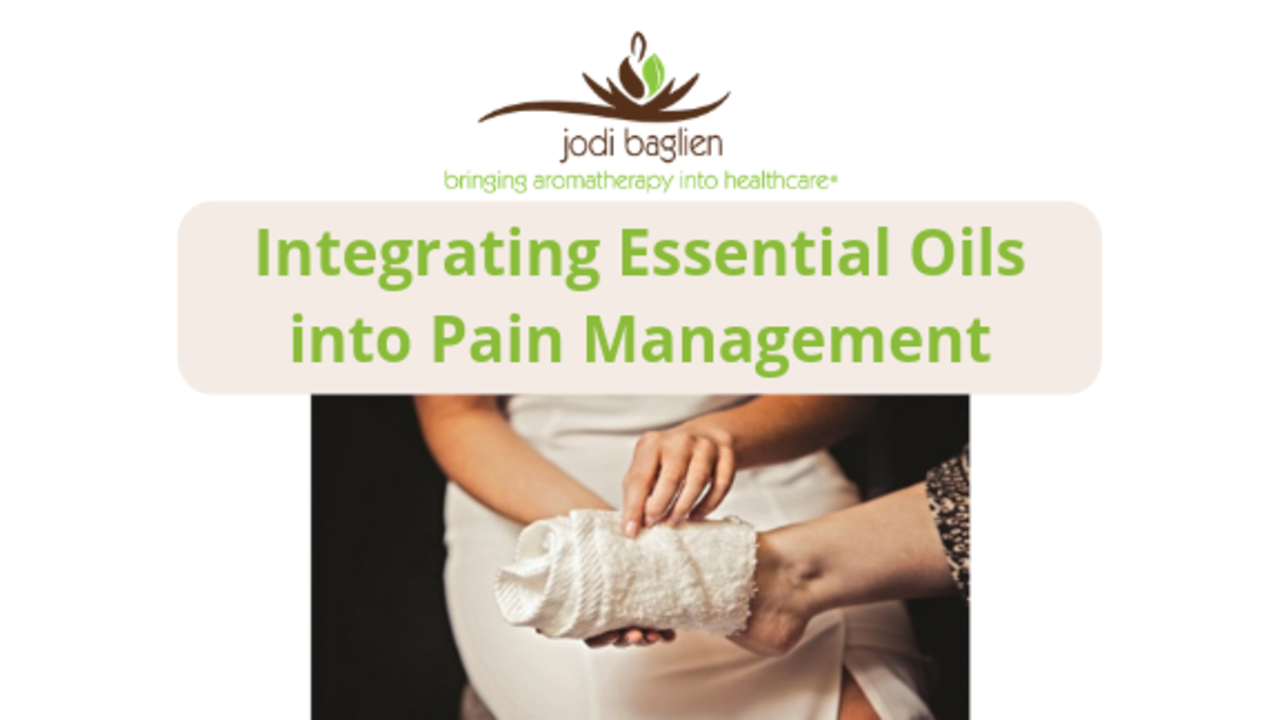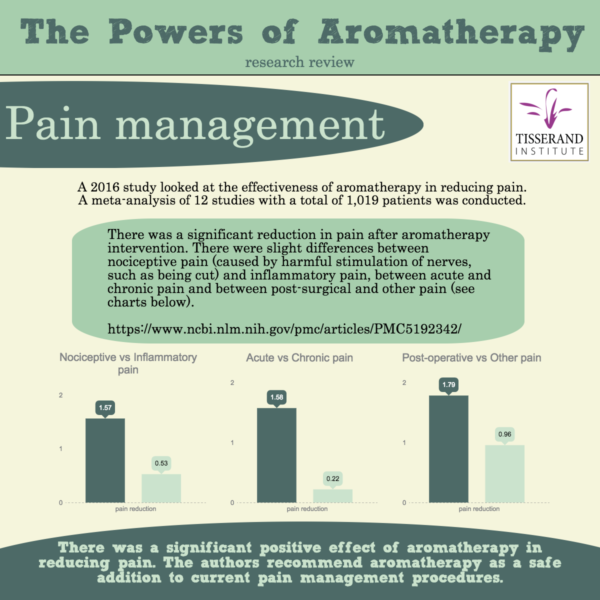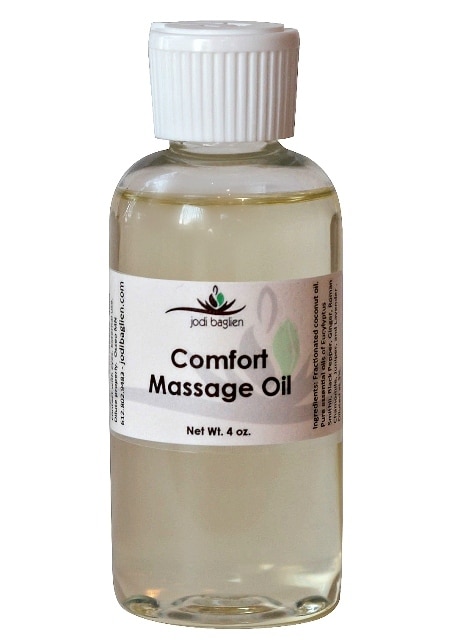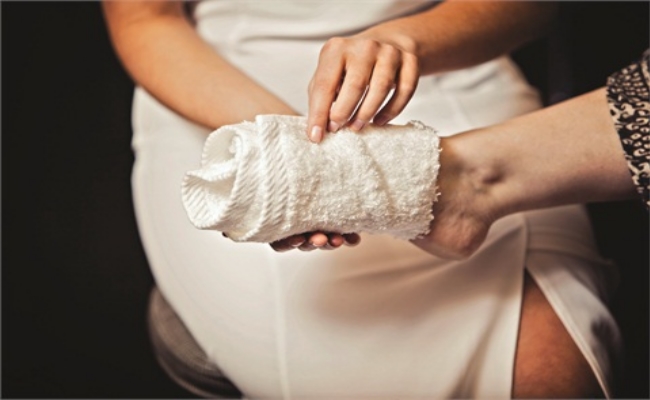Integrating Essential Oils into Pain Management

Integrating Essential Oils into Pain Management
By Jodi Baglien, Certified Clinical Aromatherapist
I was listening to a very intense conversation on NPR about the US opiate & drug overdose epidemic (read or listen to the transcript here). A pending lawsuit, Oklahoma vs. Johnson & Johnson, claims the company misrepresented opioids in their marketing.
We know through national statistics from the CDC that drug overdoses killed more than 72,000 people in the United States in 2017. A majority of the deaths, nearly 49,000, were caused by opioids. Opioids were involved in over two-thirds of overdose deaths in 2017.
As someone who seeks integrative therapies before taking medication whenever possible, I sadly have to wonder how the outcomes might have been different if our systems and culture provided easier access to and information about holistic therapies. Would we have helped prevent people from becoming addicted to these prescription opioids? We can't change the past, but we can influence the future.
There is a clear need for culture shift.
I don't believe essential oils are the singular answer to the worlds pain and stress problems, but they're a promising piece of the puzzle. Hospitals & nursing homes we work with to offer Aromatherapy to their patients boast impressive results. Essential oils do deserve a place in our integrative tool belts.
The results we see are why I want to share essential oil practical tips & processes to help you make informed decisions. You can be effective in helping manage pain, stress, and improving rest. Maybe you'll even be elevated to the role of “super pain-relieving hero” in your family, community, or healthcare setting!
For the research orientated people, this info graphic from Tisserand Institute says alot.

What kind of pain are we talking about here? Everyday stuff could include:
- Neck and shoulder tension
- Stiffness, aches and pains, sprains, & strains
- Arthritic conditions
- Colds, flu, sinus pain
- Skin & connective tissue healing
Disclaimer: Severe pain that is a result of serious disease progression or surgical pain where pain management is critical is NOT what I am addressing in this blog.
However, we know that behaviors & emotional distress from severe pain can be addressed with skillful use of essential oils that changes a person's “perception of pain,” leading to more rest and quicker recovery. There is also less need for medication and medical attention.
Ultimately, I think the big win here is that this individual learns a new self-care tool to manage their stress & pain. For optimal results, essential oils combined with other integrative therapies, such as healing touch, massage, breath work, guided imagery or music, improves the outcome. These therapies address basic human needs of feeling cared for, listened to, connected with, and empowered. Let’s get on to some simple steps you can use to up your game!
STEP ONE – What's Your Therapeutic Goal?
What do you want the oils to do? Similar to supplements or herbs, each oil has its own chemical compounds that deliver specific therapeutic actions.
For example, you fell and twisted your ankle. It’s swelling, you're in pain, and you're stressed. What actions would be helpful in this situation? Reducing inflammation and reducing pain could help you relax. Ah ha! You need analgesic, anti-inflammatory, and calming oils!
STEP TWO - Which Oils Have Those Therapeutic Actions?
Choosing the right essential oils based on their known therapeutic actions and each oil's unique chemical components will greatly improve your results.
Let’s look at the “why” behind one of my blends, Comfort, which is targeted at the common pain symptoms pictured below. We target a primary goal, such as inflammation, and then enhance the blend with supportive actions for 'all the other stuff going on at the same time!'
- Calming to inflammation & stress
- Stimulating to circulatory and lymphatic systems, which help move fluids
- Anti-spasmodic, which addresses muscle spasm and stiffness
The individual oils in the blend, below, have therapeutic actions that could also be useful for a variety of everyday symptoms.
- Roman chamomile – anti-inflammatory, anti-spasmodic, calming, vulnerary (helps tissues heal)
- Black Pepper - anti-inflammatory, rubefacient, muscle relaxer, circulatory stimulant
- Eucalyptus radiata – analgesic, decongestant, rubefacient
- Lavender – analgesic, anti-inflammatory, stress reliever
- Juniper – analgesic, diuretic, anti-rheumatic, anti-spasmodic, stress reliever
If you don't have an essential oil reference book, a quick way to look up or learn about the therapeutic actions of essential oils, we recommend AromaWeb.com. This is a great resource for on the spot information vetted by qualified Aromatherapists, recipes, and tons of resources!
STEP THREE - Choose Appropriate Delivery Method
Should you inhale? Apply to a painful area? Compress? Bath? How much should you use? Since a full tutorial on delivery methods, dilution rates, and methodology is beyond the scope of this blog, let’s think practically.
The best method for a physical complaint, such as an injured ankle, is to apply the oils topically. Inhalation will happen naturally while using a topical application and assist the nervous system in sending calming hormones out. Be intentional about enjoying the aroma, and calming your breathing.
You should hardely ever use the oils full strength. Dilution lowers the concentration of essential oils. How much dilution depends on the need, the person you are treating, and the oils selected, but a 3% dilution is a safe and effective start. A 3% dilution rate equates to three drops of essential oil combined with one teaspoon of an all-natural carrier oil, such as fractionated coconut, jojoba, or a natural lotion. We recommend you stay within range of 3% - 10% dilution. And remember, water is not a carrier oil as essential oils are not water soluble!
What are the Typical Results?
Across the board, skillful use of essential oils in patient care leads to a drop in pain scores by 2-3 points on average when using a 0-10 scale! And, the care giver also reaps the benefits by inhaling the magical molecules when applying to others.
Closing Thoughts to Ponder
In my years of experience as a hands-on holistic therapist working with pain, stress, and daily life trauma, I know people are desperately in need of compassionate care, human touch, love, and time to relax & recover - not just more prescription painkillers. A more holistic approach to wellbeing, one which also includes proper nutrition, exercise, connection to nature, stress reduction, and community, provides an opportunity to start healing the opioid epidemic, and so much more.
It's time for a culture shift. I hope this information encourages you to make changes in your homes and communities. We will all be better for it!
Stay connected with us for updates, success stories, and Aromatherapy musings!
Be a part of the culture shift - receive information about Aromatherapy in healthcare.
Don't worry, we don't send too much and your information will not be shared.
50% Complete
Two Step
Lorem ipsum dolor sit amet, consectetur adipiscing elit, sed do eiusmod tempor incididunt ut labore et dolore magna aliqua.


